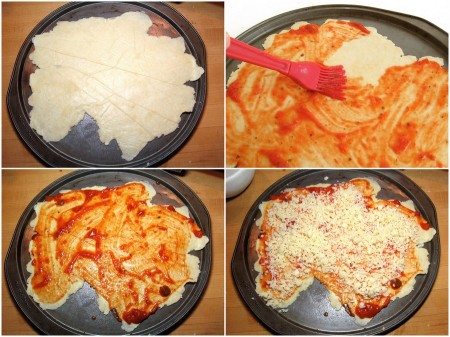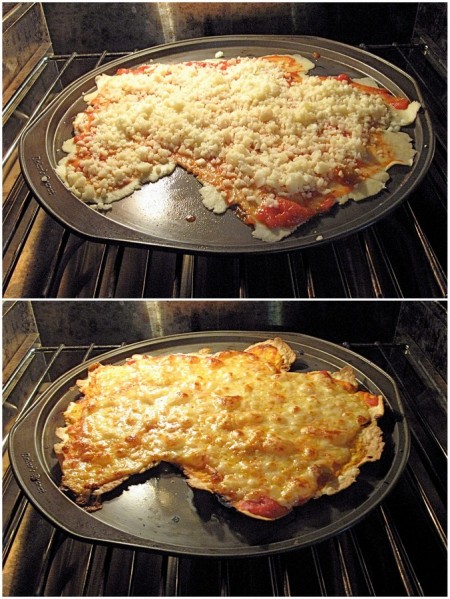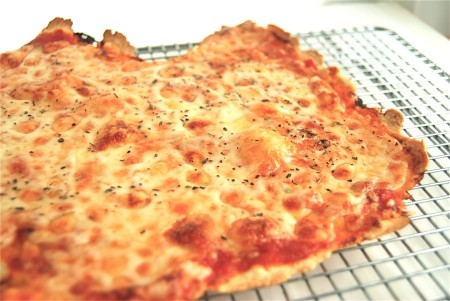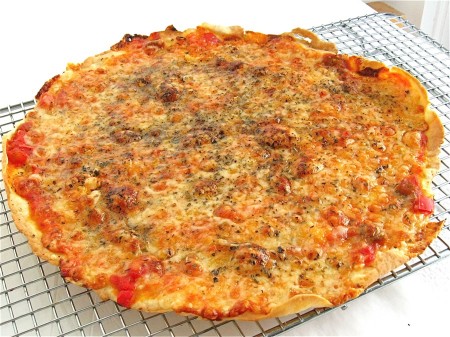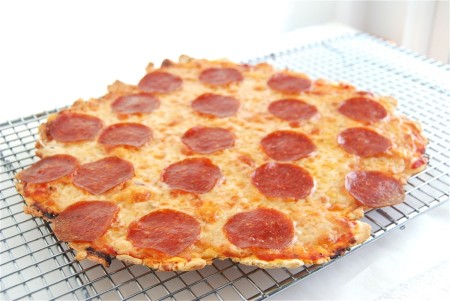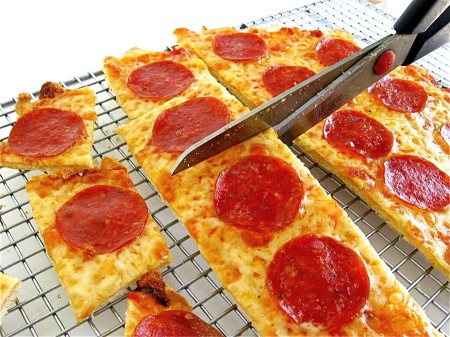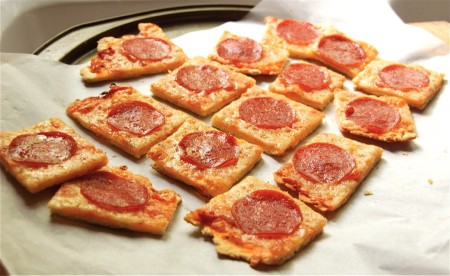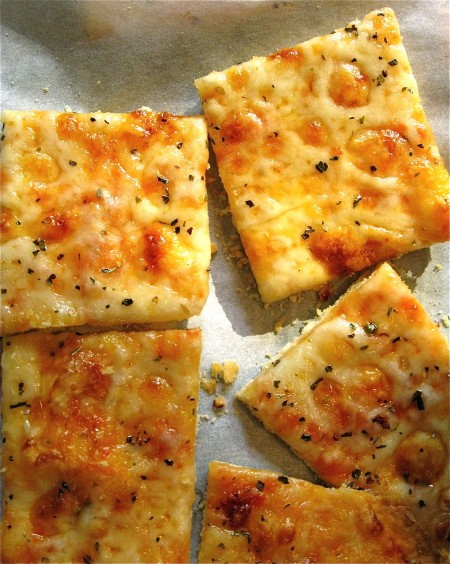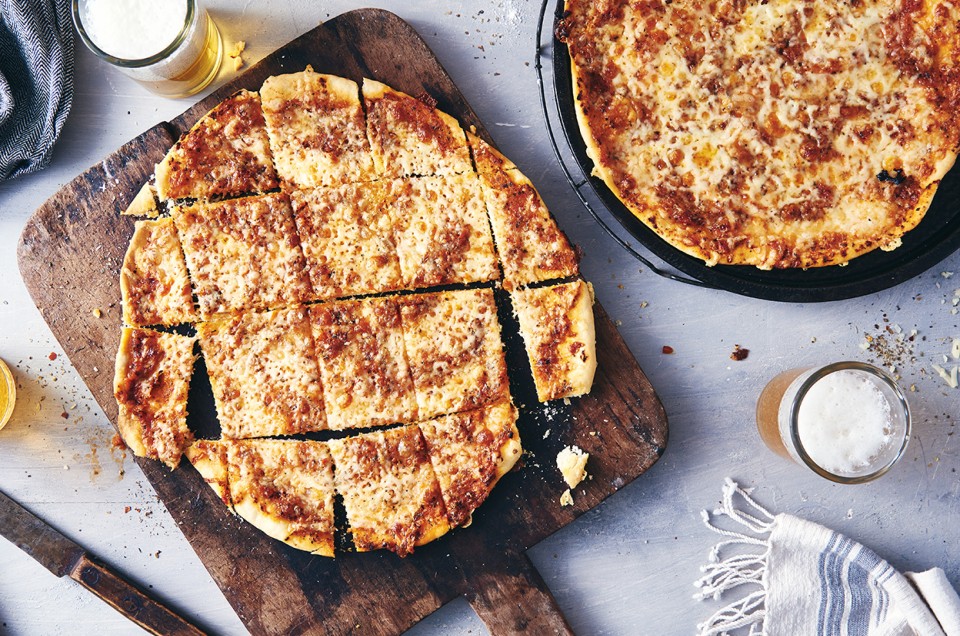


If you make pizza crust with baking powder instead of yeast, is it still pizza crust?
The response of many pizza aficionados, when I ask this question, is an unequivocal NO.
"Baking powder crust? Sounds like home ec. class!"
"It may be good, but it's not pizza."
Tell that to native St. Louisans.
A couple of years ago I read about St. Louis pizza, an unusual ultra-thin-crust, square-cut pizza, and made a mental note to give it a try.
Well, time passed [old cinematic visual: paper calendar shedding months like leaves], and I never... quite... got around to it.
Our recent launch of self-rising flour brought St. Louis pizza bubbling to the top of my memory once again.
An "authentic" St. Louis pizza crust recipe calls for flour, baking powder, salt, water, and olive oil.
[Ed. note: a word about authenticity – There are many St. Louis Pizza recipes online, but all seem to stem from one particular St. Louis chain: Imo's, a "mom and pop" business with over 90 stores in and around St. Louis. Our thanks to Imo's for the recipe that inspired the one below.]
This simple recipe sounds like a perfect use for self-rising flour. Self-rising is a softer-wheat, lower-protein flour – which means the crust should end up crunchy/crisp, not hard.
Potentially long story short(er): I tried it. I LOVE it.
St. Louis pizza may not be "typical" pizza. Heck, if you're a purist, it's probably not even pizza.
But oh, my... is it ever tasty!
And easy to make. You can have pizza on the table in under 30 minutes, from the time the idea pops into your head, until you're slicing St. Louis pizza into its signature squares.
Are you ready to loosen your strict definition of pizza, and give this Midwest version a try? Let's do it.
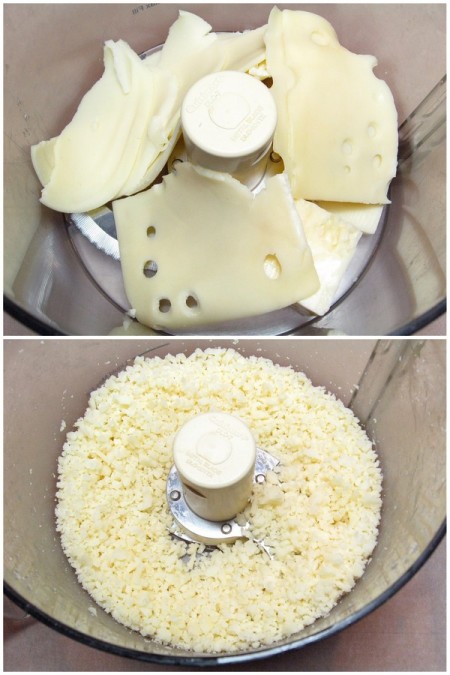
First, let's mimic the special cheese you'd find in a real St. Louis pizza: Provel, a low melting-point, processed cheese that's a combination of smoked Provolone, cheddar, and Swiss
To make this at home, combine the following:
1 cup (4 ounces) grated or shredded sharp white cheddar cheese
1/2 cup (2 ounces) grated or shredded smoked provolone cheese
1/2 cup (2 ounces) grated or shredded Swiss cheese
I purchased sliced cheese, and grated it in my food processor. I actually doubled the amount, and froze half for a future pizza.
To make a big batch of this, just use two parts cheddar to one part each smoked provolone and Swiss. TOTALLY EASY: 2 bags shredded cheddar + 1 bag shredded Swiss + 1 bag shredded Provolone. Use within a week or so, or freeze for the future.
If you can't find smoked Provolone, add 1 teaspoon liquid smoke flavor (e.g., Liquid Smoke) to each 8 ounces of cheese. If you're not a fan of "smoky," leave it out.
OK, enough with the cheese – let's make pizza.
First, preheat your oven to 425°F. Lightly grease two 12" round pizza pans, or a couple of baking sheets.
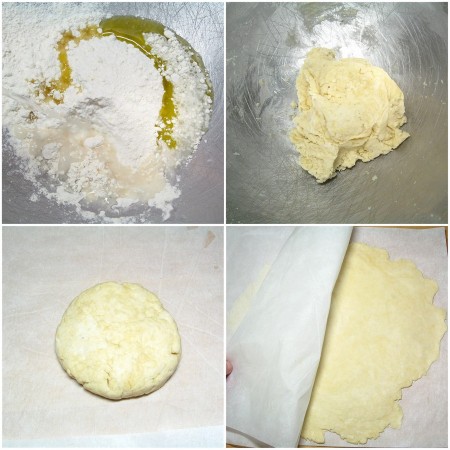
Combine the following:
2 cups (8 ounces) King Arthur Unbleached Self-Rising Flour
2 tablespoons olive oil
6 tablespoons water
*No self-rising flour? Substitute 2 cups King Arthur Unbleached All-Purpose Flour; add 1 teaspoon baking powder and 1/2 teaspoon salt, and increase the water to 1/2 cup.
Feel free to increase the water in the dough a bit — especially in winter, when it's cold out and your flour will tend to be dry. Your goal is dough that's firm (not sticky), but wet enough to hold together when you squeeze it.
Gather the dough into a ball, divide it in half, and shape each half into a flat disk – the rounder the better. If you have time, let the dough rest, covered, for 10 to 15 minutes; it'll be easier to roll out once it's rested.
Grease a piece of parchment paper about 12" square; or a piece of waxed paper, or plastic wrap.
Place one of the dough pieces on the paper, and top with another piece of lightly greased parchment, waxed paper, or plastic wrap.
Roll the dough very thin, 1/8" thick or less.
Place the pizzas on the prepared pans.
See this misshapen pizza? That's why you shape your unrolled dough into a ROUND disk. I left mine raggedy; raggedy disk = pizza crust mimicking a map of Australia. Do as I say, not as I did!
Top each pizza with 1/3 cup pizza or marinara sauce.
Spread half the cheese (about 1 cup) over each pizza. Sprinkle lightly with Pizza Seasoning or dried Italian herbs.
Bake the pizzas for 9 to 11 minutes, until the cheese is melted and beginning to brown, and the edges and bottom of the crust are golden brown.
Remove the pizzas from the oven, and transfer to a rack to cool very briefly.
Here's my second attempt, where I remembered to make a ROUND disk of dough. See what a difference it makes?
And here's one with pepperoni.
Cut the pizza in squares; a pair of scissors works well here.
Serve hot.
Although room-temperature pizza is always a pleasure, too.
As is cold pizza. For breakfast.
I recently heard a hotel somewhere has started offering free pizza, left over from the previous night's restaurant menu, to guests heading out for the day. The guests are devouring it, and asking for more.
Happy breakfasting!
Read, bake, and review (please) our recipe for St. Louis-Style Pizza.


